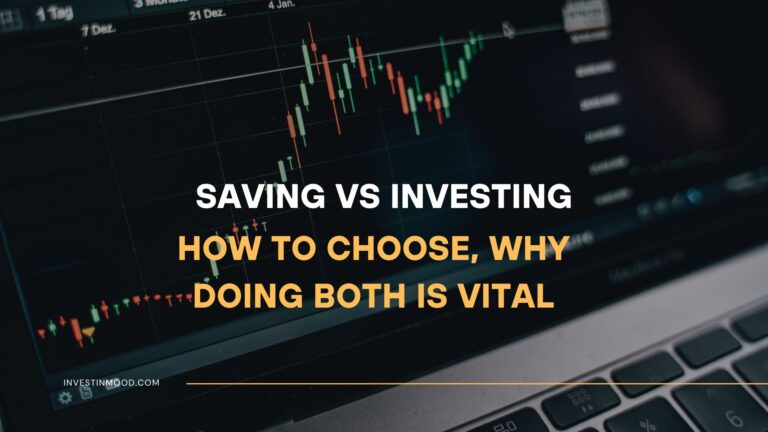
The 10 Best Fidelity Retirement Plans of 2026
Taking control of your retirement future starts with choosing the right plan. Fidelity Investments offers a suite of powerful options, but navigating them can be complex. This guide cuts through the complexity to review the best Fidelity retirement accounts and tools available today. We help you find the perfect fit for your goals, whether you’re a US employee with a 401(k), a self-employed individual, or an investor looking to roll over old accounts, to build wealth and achieve financial freedom.
What are Fidelity Retirement Plans
Fidelity retirement plans are a collection of tax-advantaged investment accounts and employer-sponsored programs designed to help individuals save and invest for retirement. They act as a container for your investments (like mutual funds, ETFs, and stocks), providing structure, potential tax benefits, and a long-term framework for growing your nest egg. Think of them as the engine of your retirement strategy, where you systematically fuel your future with regular contributions and strategic asset allocation. Fidelity is one of the world’s largest providers, offering everything from workplace 401(k)s to personal IRAs.
Key Takeaways
Goal-Based Plan Selection
| Your Primary Goal | Best Fidelity Plan | Key Feature to Look For |
|---|---|---|
| Saving through an Employer | Fidelity 401(k) | Employer match, low-cost index fund options. |
| Individual Saving & Investing | Fidelity IRA / Roth IRA | Choice of tax treatment, full investment flexibility. |
| Self-Employed / Business Owner | Fidelity Solo 401(k) | High contribution limits, ability to act as both employee and employer. |
| Managing Old 401(k)s | Fidelity Rollover IRA | Consolidation of multiple accounts, simplified management. |
| Maximizing Retirement Income | Fidelity Managed Accounts | Professional portfolio management and withdrawal strategies. |
For investors in the UK, Fidelity offers similar retirement planning principles through its international branches, though specific plans like the 401(k) are US-centric. UK savers should look into Fidelity’s offerings for Stocks and Shares ISAs and Self-Invested Personal Pensions (SIPPs), which serve similar retirement functions.
Top 10 Fidelity Retirement Plans For You
We’ve analyzed Fidelity’s entire ecosystem to bring you unbiased, detailed reviews. Here are our top 10 picks for 2026, broken down by their strengths, ideal user, and key features. Whether you’re just starting out or fine-tuning your retirement income, there’s a Fidelity plan designed for you.
1. Fidelity 401(k)
Overall Score: 5/5
Best For: Employees saving for retirement through their workplace.
Pricing: No account fee; underlying investment fund expenses apply.
The Fidelity 401(k) is the cornerstone of retirement savings for millions of Americans. It’s an employer-sponsored plan that allows you to contribute a percentage of your salary directly from your paycheck, often with a matching contribution from your employer. Fidelity administers these plans for thousands of companies, providing a robust platform with diverse investment options, educational resources, and clear tracking tools. The power of automatic, pre-tax savings makes it one of the most effective ways to build retirement wealth.
Key Features:
- Automatic payroll deductions
- Potential for employer matching contributions
- A curated menu of investment options (e.g., target-date funds, index funds)
- Loan and hardship withdrawal options (subject to plan rules)
- Integrated planning tools to project your retirement income
- Employer Match This is the biggest advantage, providing an immediate, risk-free return on your investment.
- High Contribution Limits For 2025, you can contribute up to $23,000 ($30,500 if 50 or older).
- Automated Discipline Payroll deductions make saving effortless and consistent.
- Limited Investment Choices You are restricted to the funds selected by your employer’s plan.
- Early Withdrawal Penalties Accessing funds before age 59½ typically incurs a 10% penalty.
- Plan-Dependent Features The quality of the plan depends entirely on your employer.
Why We Picked It: We chose the Fidelity 401(k) for the #1 spot because it is the most impactful retirement savings vehicle for the average American, primarily due to the potential for employer matching contributions. It’s the foundational account upon which most retirement strategies are built.
2. Fidelity Roth IRA
Overall Score: 5/5
Best For: Tax-free growth and withdrawals in retirement; younger investors or those who expect to be in a higher tax bracket later.
Pricing: No account fees for standard accounts; standard brokerage commissions for trades ($0 for Fidelity ETFs and many mutual funds).
The Fidelity Roth IRA is a powerhouse for tax-free retirement savings. You contribute with after-tax dollars, meaning you don’t get a tax deduction today. However, your investments grow completely tax-free, and you can make qualified withdrawals in retirement without paying any taxes. This is incredibly valuable for long-term growth. Fidelity’s platform makes it easy to open and manage a Roth IRA, with access to all their research, tools, and investment options.
Key Features:
- Tax-free growth and qualified withdrawals
- Contributions can be withdrawn at any time, for any reason, without penalty
- No Required Minimum Distributions (RMDs) during your lifetime
- Full access to Fidelity’s investment universe
- Tax-Free Withdrawals The primary benefit, shielding all your investment gains from taxes in retirement.
- Contribution Flexibility You can withdraw your contributions at any time penalty-free.
- No RMDs Unlike Traditional IRAs, you are not forced to take distributions at age 73.
- No Upfront Tax Deduction Contributions are made with after-tax money.
- Income Limits High earners may be ineligible to contribute directly.
- Lower Contribution Limits $7,000 for 2025 ($8,000 if 50 or older).
Why We Picked It: The Fidelity Roth IRA is an essential component of a diversified retirement strategy due to its unparalleled tax-free growth potential, making it our top pick for individual retirement accounts.
3. Fidelity Traditional IRA
Overall Score: 4.5/5
Best For: Individuals seeking a tax deduction now and who expect to be in a lower tax bracket in retirement.
Pricing: No account fees for standard accounts.
The Fidelity Traditional IRA offers immediate tax benefits for retirement savers. Contributions may be tax-deductible, reducing your taxable income for the year you contribute. The money grows tax-deferred until retirement, when withdrawals are taxed as ordinary income. This makes it ideal for people who believe their tax rate will be lower in retirement than it is today.
Key Features:
- Potential for tax-deductible contributions
- Tax-deferred growth on investments
- Required Minimum Distributions (RMDs) starting at age 73
- Full investment flexibility within Fidelity’s platform
- Immediate Tax Deduction Contributions may lower your current-year tax bill.
- Tax-Deferred Growth Investments grow without annual tax drag.
- Higher Income Limits No income limits if you don’t have a workplace retirement plan.
- Taxable Withdrawals All distributions in retirement are taxed as ordinary income.
- Required Minimum Distributions You must start taking money out at age 73.
- Deduction Phase-Outs Income limits apply if covered by a workplace plan.
Why We Picked It: We chose the Traditional IRA because it provides crucial tax diversification and immediate tax benefits for savers who don’t have access to workplace plans or who expect to be in a lower tax bracket during retirement.
4. Fidelity Rollover IRA
Overall Score: 5/5
Best For: Consolidating old 401(k) accounts from previous employers.
Pricing: No account fees for standard accounts.
A Fidelity Rollover IRA is specifically designed to receive assets from qualified retirement plans like 401(k)s from previous employers. It’s not a contribution account but rather a consolidation tool that helps you maintain the tax-deferred status of your retirement savings while gaining control over your investment choices. This account type simplifies your financial life by bringing multiple old accounts under one roof.
Key Features:
- Tax-free transfer of retirement assets
- Full access to Fidelity’s complete investment menu
- Consolidated reporting and management
- Maintains tax-deferred status of your savings
- Investment Control Escape limited 401(k) fund menus and access thousands of investments.
- Consolidation Simplify management by combining multiple old accounts.
- Cost Savings Potentially lower fees than some employer plans.
- No Loans Unlike 401(k)s, you cannot take loans from an IRA.
- Creditor Protection May have slightly less protection than ERISA-covered 401(k) plans.
- Backdoor Roth Complications Can create pro-rata tax issues if considering Backdoor Roth strategies.
Why We Picked It: The Rollover IRA is essential because nearly every worker will change jobs multiple times, and this account provides the optimal solution for managing old retirement assets while maintaining tax advantages and investment flexibility.
5. Fidelity Solo 401(k)
Overall Score: 4.8/5
Best For: Self-employed individuals or business owners with no employees (other than a spouse).
Pricing: No account fees.
The Fidelity Solo 401(k) is a retirement powerhouse for the self-employed. It allows business owners to contribute both as an employee (up to $23,000 for 2025) and as an employer (up to 25% of compensation), with total contributions reaching $69,000 for 2025 ($76,500 if 50 or older). This plan offers the highest contribution limits of any self-employed retirement option, making it ideal for maximizing retirement savings.
Key Features:
- Exceptionally high contribution limits
- Dual contribution structure (employee + employer)
- Roth 401(k) option available
- Loan provisions available
- Full investment flexibility with Fidelity
- Highest Contribution Limits Allows massive annual retirement savings.
- Tax Flexibility Choose between traditional and Roth contributions.
- Loan Option Access to funds through plan loans if needed.
- No Employees Generally cannot have full-time employees other than owners and spouses.
- Administrative Complexity More paperwork than SEP or SIMPLE IRAs.
- Form 5500-EZ Requires annual filing with IRS once assets exceed $250,000.
Why We Picked It: We selected the Solo 401(k) because it offers self-employed individuals the ability to save more for retirement than any other plan, combining high limits with investment flexibility and tax advantages.
6. Fidelity SEP IRA
Overall Score: 4.5/5
Best For: Small business owners and self-employed individuals who want a simple, high-contribution plan.
Pricing: No account fees.
The Fidelity SEP IRA (Simplified Employee Pension) is an excellent retirement solution for business owners and self-employed individuals seeking high contribution limits with minimal administrative complexity. It allows employers to make tax-deductible contributions to their own and their employees’ retirement accounts. The setup process is straightforward, and annual administration is simpler than with a 401(k), making it particularly attractive for small businesses without full-time HR departments.
Key Features:
- High contribution limits (up to 25% of compensation or $69,000 for 2025)
- Easy setup and minimal paperwork
- Tax-deductible employer contributions
- No annual filing requirements with the IRS
- Full investment flexibility with Fidelity’s platform
- High Contribution Limits Allows substantial retirement savings compared to traditional IRAs.
- Simple Administration Much easier to manage than 401(k) plans.
- Tax-Deductible Contributions Employer contributions are tax-deductible.
- Employee Inclusion Required Must cover all eligible employees if you have any.
- Employer-Only Contributions Employees cannot contribute to their own accounts.
- Immediate Vesting Contributions are immediately 100% vested for employees.
Why We Picked It: We selected the SEP IRA because it offers business owners an optimal balance of high contribution limits and administrative simplicity, making it perfect for self-employed individuals and small businesses looking to maximize retirement savings without complex paperwork.
7. Fidelity SIMPLE IRA
Overall Score: 4/5
Best For: Small businesses with 100 or fewer employees seeking an affordable, easy-to-manage retirement plan.
Pricing: No account fees for the employer or employee.
The Fidelity SIMPLE IRA (Savings Incentive Match Plan for Employees) is designed specifically for small businesses that want to offer retirement benefits without the complexity and cost of a 401(k). It requires employer contributions but has minimal administrative requirements and no annual filing. Employees can make salary reduction contributions, and employers must either match employee contributions or make non-elective contributions, making it a straightforward option for small business retirement planning.
Key Features:
- Easy setup and low administrative costs
- Employee salary deferral contributions
- Mandatory employer contributions (match or non-elective)
- No annual IRS filing requirements
- Lower costs than traditional 401(k) plans
- Low Administrative Burden Much simpler than 401(k) plans.
- Employee Participation Employees can contribute directly from salary.
- No Annual Filing No complex IRS forms required.
- Lower Contribution Limits $16,000 for 2025 ($19,500 if 50 or older).
- Mandatory Employer Contributions Must contribute for all eligible employees.
- Early Withdrawal Penalty 25% penalty for withdrawals within first 2 years.
Why We Picked It: The SIMPLE IRA earns its spot because it provides small businesses with an accessible, cost-effective way to offer retirement benefits while ensuring employee participation through mandatory employer contributions.
8. Fidelity Health Savings Account (HSA)
Overall Score: 5/5
Best For: Individuals with a High-Deductible Health Plan (HDHP) looking for a triple-tax-advantaged account for medical and retirement savings.
Pricing: Potential monthly account fee waived if certain conditions are met.
The Fidelity HSA stands out as arguably the most tax-advantaged account available. When paired with a High-Deductible Health Plan, it offers triple tax benefits: tax-deductible contributions, tax-free growth, and tax-free withdrawals for qualified medical expenses. What makes Fidelity’s HSA exceptional is that it has no account fees for most users and offers full investment flexibility, allowing you to grow your health savings just like a retirement account.
Key Features:
- Triple tax advantage (deductible, tax-free growth, tax-free withdrawals)
- No account fees for most users
- Full investment flexibility with Fidelity’s platform
- No requirement to spend funds by year-end
- Can be used as a supplemental retirement account after age 65
- Triple Tax Advantage Unique tax benefits unmatched by other accounts.
- Investment Growth Potential Can invest HSA funds for long-term growth.
- No Use-It-Or-Lose-It Funds roll over indefinitely.
- HDHP Requirement Must be enrolled in a qualified High-Deductible Health Plan.
- Contribution Limits $4,150 individual / $8,300 family for 2025.
- Non-medical Penalty Withdrawals for non-medical expenses before 65 incur 20% penalty.
Why We Picked It: We chose the Fidelity HSA because its triple tax advantage makes it the most efficient savings vehicle available, effectively serving as both a healthcare fund and a powerful supplemental retirement account when maximized.
9. Fidelity Personal Retirement Annuity®
Overall Score: 3.5/5
Best For: High-income earners who have maxed out other tax-advantaged accounts and want additional tax-deferred growth.
Pricing: No sales charges or surrender fees; underlying fund expenses apply.
The Fidelity Personal Retirement Annuity is a variable annuity that provides tax-deferred growth opportunities beyond traditional retirement account limits. It’s designed for investors who have already maximized contributions to their 401(k)s and IRAs but want to continue saving for retirement in a tax-advantaged vehicle. Unlike many annuities, Fidelity’s version has no sales loads or surrender charges, making it more cost-effective than typical insurance company products.
Key Features:
- Tax-deferred growth on investments
- No contribution limits
- No sales charges or surrender fees
- Access to Fidelity’s fund lineup
- Lifetime income options available
- No Contribution Limits Can invest unlimited amounts for tax-deferred growth.
- No Sales Charges Unlike most annuities, no commissions or surrender periods.
- Tax Deferral Earnings grow tax-deferred until withdrawal.
- Ordinary Income Tax Withdrawals taxed as ordinary income, not capital gains.
- Early Withdrawal Penalty 10% penalty on earnings withdrawn before age 59½.
- Higher Expense Ratios Underlying funds may have higher costs than standard ETFs.
Why We Picked It: The Personal Retirement Annuity makes our list because it serves a specific but important niche: high-earners who need additional tax-advantaged space after maxing out all other retirement accounts, and Fidelity’s no-fee structure makes it superior to most annuity products.
10. Fidelity Guided Retirement Portfolio
Overall Score: 4/5
Best For: Hands-off investors who want a professionally managed, diversified portfolio aligned with their retirement date.
Pricing: No advisory fee; only the expenses of the underlying Fidelity Flex® mutual funds apply.
The Fidelity Guided Retirement Portfolio is a digital advice solution that creates and manages a personalized portfolio based on your retirement timeline and risk tolerance. It uses Fidelity’s proprietary methodology to build a globally diversified portfolio of Fidelity Flex mutual funds, automatically rebalancing and adjusting the asset allocation over time. The zero advisory fee makes it an exceptional value for investors who want professional management without the cost of traditional financial advisors.
Key Features:
- No advisory fees
- Automated portfolio management and rebalancing
- Globally diversified using Fidelity Flex funds
- Automatic glide path adjustment as retirement approaches
- Integrated with Fidelity’s planning tools
- Zero Advisory Fee Professional management at no additional cost.
- Automatic Rebalancing Portfolio automatically stays on target.
- Glide Path Management Asset allocation automatically adjusts as you near retirement.
- Limited Customization Less control than self-directed investing.
- Fidelity-Only Funds Limited to Fidelity Flex fund lineup.
- Digital-Only Service No access to human financial advisors.
Why We Picked It: We selected the Guided Retirement Portfolio because it offers sophisticated, automated retirement investing at zero cost, making professional portfolio management accessible to all investors regardless of account size.
Leveraging Fidelity’s Retirement Planning Tools
A key advantage of using Fidelity for your retirement plans is the seamless integration with their powerful, free planning software. These tools transform your accounts from static containers into dynamic parts of a living financial plan.
The Retirement Score: This is your financial vital sign. Located on your account homepage, it gives a single number estimating the percentage of your pre-retirement income you’re on track to replace. It’s a fantastic, at-a-glance motivator that updates in real-time as your account balances and market conditions change.
The Full Retirement Plan: Clicking into the score reveals a detailed plan. You can model different scenarios: “What if I retire earlier?” “What if I contribute more?” “What if market returns are lower than expected?” This allows for stress-testing your strategy and building confidence.
The Income Strategy Analysis: For those near retirement, this tool is invaluable. It helps you visualize how your savings, Social Security, and other income sources will cover your expenses throughout retirement. You can test different Social Security claiming strategies and withdrawal rates from your portfolio.
Why This Matters: Competitors often just list the accounts. By explaining how to use the tools that make the accounts effective, we provide a significant step-up in value, moving from “what” to “how.”
Understanding Contribution Limits and Deadlines (2025/2026)
Merely knowing about a plan isn’t enough; you need to know the rules for funding it. Here’s a critical summary of the current IRS limits.
Key Takeaways:
- IRA Deadlines are Flexible: You can contribute to an IRA for the previous tax year until the tax filing deadline (typically April 15th of the following year). This is a great opportunity for last-minute planning.
- Solo 401(k) Power: Note the high limit for the Solo 401(k). As the “employer,” you can contribute up to 25% of your net self-employment income, on top of the $23,000 “employee” contribution.
- Catch-Up Contributions: If you’re 50 or older, always take advantage of catch-up contributions to accelerate your savings as you approach retirement.
Why This Matters: This section provides immediate, actionable, and time-sensitive data that readers actively search for. It positions your article as a current and authoritative resource.
A Real-World Example: Maximizing an Employer 401(k)
Consider Mark, a 35-year-old software engineer with a $100,000 salary. His employer offers a Fidelity 401(k) with a 50% match on the first 6% of his salary. Feeling unsure, he only contributed 3%. By using Fidelity’s retirement planning tools, he saw a projection showing he was on track to replace only 60% of his pre-retirement income. The tool highlighted the impact of the unclaimed employer match. Mark increased his contribution to 6%, instantly capturing the full match. This single move added $3,000 of “free money” to his account annually and put his retirement plan back on a healthy trajectory.
Conclusion
Ultimately, Fidelity provides a comprehensive toolkit for virtually every retirement saver. The right plan acts as a powerful engine for your financial future, providing the structure, tax advantages, and investment firepower needed to transition from saving to wealth building. While the choice depends on your employment status, income, and long-term goals, the act of choosing and consistently funding a Fidelity plan is a critical step toward financial independence. The clarity and confidence gained from using their integrated planning tools are invaluable. Start by maximizing your employer’s 401(k) match, then consider an IRA to round out your strategy.
Ready to build your retirement plan with Fidelity? The best way to start is to log into your existing 401(k) or open an IRA today. Once you’ve chosen your account, the next step is to select the right investments for your strategy. Check out our guide on the Best Fidelity Index Funds to build a low-cost, diversified portfolio.
How Fidelity Retirement Plans Relate to Other Concepts
It’s important to understand how retirement plans differ from standard brokerage accounts and automated services.
| Feature | Fidelity Retirement Plans | Fidelity Brokerage Account | Fidelity Robo-Advisor (Fidelity Go®) |
|---|---|---|---|
| Primary Function | Tax-advantaged long-term savings & investing. | General investing with no tax advantages. | Automated investing for a hands-off approach. |
| Tax Treatment | Tax-deferred or tax-free growth. | Taxable (capital gains & dividends taxed annually). | Taxable or within an IRA (tax treatment depends on account type). |
| Contribution Limits | Yes, strictly enforced by the IRS. | No limits. | Depends on the underlying account type (IRA or taxable). |
| Withdrawal Rules | Penalties for early withdrawal before age 59½. | No restrictions on withdrawals. | No restrictions, but underlying account rules apply. |
| Best For | Building a retirement nest egg. | Saving for goals <5 years, or after maxing retirement accounts. | Investors who want professional management without the high cost. |
Related Terms
- Asset Allocation: The strategy of dividing your investment portfolio among different asset categories, such as stocks, bonds, and cash. This is a key decision within any Fidelity retirement plan.
- Target-Date Fund: A single, diversified mutual fund that automatically adjusts its asset allocation to become more conservative as you approach the target retirement year. A popular “all-in-one” choice in Fidelity 401(k)s and IRAs.
- Expense Ratio: The annual fee expressed as a percentage of your investment, charged by mutual funds and ETFs. Fidelity is known for its low-cost index funds with minimal expense ratios.
- Required Minimum Distribution (RMD): The minimum amount you must withdraw from your Traditional IRA and 401(k) each year, starting at age 73. Roth IRAs do not have RMDs.






